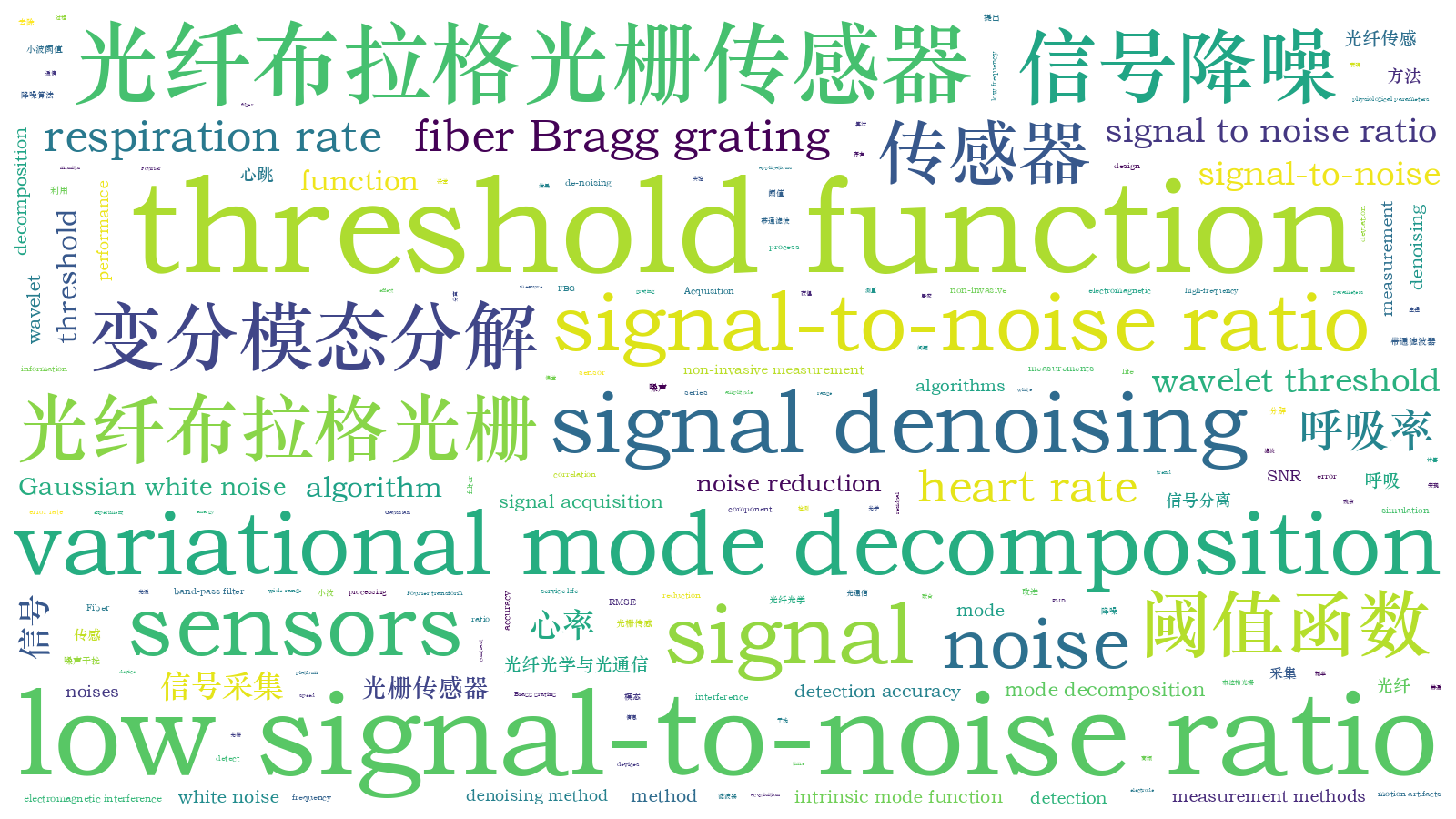基于光纤传感的呼吸与心跳信号采集方法  下载: 1159次
下载: 1159次
As important physiological indicators of human body, respiration and heart rate can reflect the presence of certain diseases including heart diseases. Photoelectric sensors are more resistant to electromagnetic interference and have a longer service life, which now have a wide range of applications and are used by many researchers to detect physiological parameters. The corresponding measurement methods are mainly divided into two types: non-invasive and invasive. An invasive measurement requires the devices such as electrode pads to contact with body, which can be extremely constricting for the subject and not be easily used in daily life. In contrast, the non-invasive measurement avoids this problem. It is a convenient and comfortable way to measure at home. Since electronic sensors are susceptible to electromagnetic interference, they are not suitable for long-term measurements. Therefore, we need to select a proper sensor to detect physiological information. When a non-invasive physiological information measurement is implemented, the signal is easily disturbed by high-frequency noises and motion artifacts, which reduces the detection accuracy. In order to improve the detection accuracy, one needs to process the acquired signals for de-noising.
We design a signal acquisition platform based on fiber Bragg grating(FBG) sensors, which contains three detection channels, each containing three sensors linked in series. Firstly, the detection device is placed on the bed to collect the signals and demodulate them. This design is to allow subjects to be free from the limitation of lying flat positions. Second, we select the signals acquired by two sensors with the highest energy from the nine detected signals to find the average value of these two sensor output signals and de-trend them. Third, the noise in the signals is removed by using variational mode decomposition (VMD) combined with the improved wavelet threshold function algorithm. The signals are decomposed into a series of intrinsic mode function (IMF) components by using the VMD algorithm. We calculate the correlation coefficient between each component and the original signal, and use the coefficient to determine whether each component is valid or not. The effective IMF components are de-noised again using an improved wavelet threshold function. Finally, we determine whether the motion artifacts are present in the signal or removed, separate the respiratory signal from the heartbeat signal using a band-pass filter, and calculate the respective frequencies using Fourier transform.
We use a denoising method based on VMD combined with an improved wavelet threshold function. Compared with other threshold functions, the estimated wavelet coefficient amplitudes obtained from the processing of our designed threshold function have less deviation from the true amplitudes (Fig. 3). The speed of approximating the true amplitude is faster. It proves to be superior. To verify the performance of the proposed method, we select three comparative algorithms to conduct simulation experiments. We use signal to noise ratio (SNR), root mean squared error (RMSE) , and percent root mean square difference (PRD) to evaluate the denoising performance. The 5 dB25 dB Gaussian white noise is added to the simulated signal. The denoising performance is also verified in the actual acquired signals. From the simulation results (Tables 2, 3, and 4), the SNR after denoising is 30.287 by adding the 25 dB noise. At the same time, the RMSE and PRD are 0.2597 and 3.0595, respectively. The proposed method is superior in these three indicators compared with other methods. The calculated SNR value after de-noising can reach 15.8232 dB with additional 5 dB noise. Even if the signal has a low signal-to-noise ratio, the proposed algorithm still has a good de-noising performance. Results of the actual experiment can be seen in Figs. 11 and 12. The signal obtained after denoising by the proposed algorithm is smooth and the burrs in the signal have been removed. This is due to the fact that VMD overcomes the mode aliasing and endpoint effects of empirical mode decomposition (EMD) in the decomposition process. It has a good decomposition effect on low frequency signals. And we use the correlation coefficient to select the valid and invalid signals, and successfully remove most of the invalid signals (Table 5). The improved wavelet threshold function in this paper can well remove the residual noise in the signal. In general, the proposed algorithm can remove the noise in the signal better than other algorithms.
We propose a method to acquire respiration and heartbeat signals based on FBG sensors. A combined variational mode decomposition with improved wavelet threshold function (VMD-IWT) noise reduction algorithm is used to remove noise interference existing in signals. The simulation results show that our proposed algorithm realizes the best SNR, RMSE, and other indicators, and makes actual signals smoother after noise reduction. We use a band-pass filter to separate signals and calculate their frequencies. The maximum error rate of heart rate is 8.75% with respect to the reference value, and the maximum deviation of respiration rate from the reference value is 1 bpm, which proves the better accuracy of the proposed method. This provides a more convenient and economical way to monitor health at home.
李玉环, 陈勇, 刘焕淋, 江涛. 基于光纤传感的呼吸与心跳信号采集方法[J]. 中国激光, 2022, 49(4): 0406004. Yuhuan Li, Yong Chen, Huanlin Liu, Tao Jiang. Respiration and Heartbeat Signal Acquisition Method Based on Fiber Optic Sensing[J]. Chinese Journal of Lasers, 2022, 49(4): 0406004.







